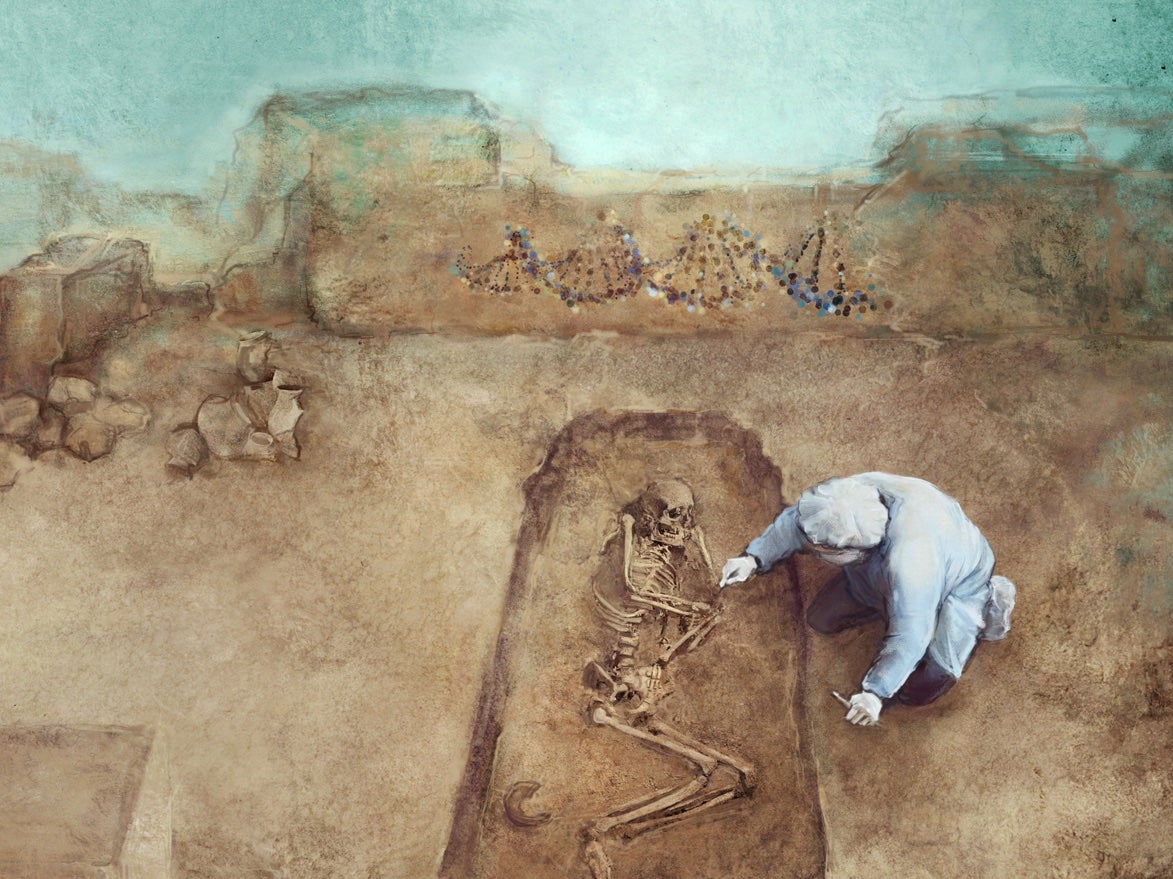How switch from hunter-gathering made our farmer ancestors shorter
Change in lifestyle reduced height by an average of 1.5 inches, reports Emily Atkinson

Our ancestors got shorter when they transitioned from hunter-gathering to farming 12,000 years ago, according to a new study.
A team of researchers took measurements from the sketetal remains and analysed the DNA of 16 ancient individuals.
The bones, dating back to either before, after or during the emergence of farming in Europe, showed that the change in lifestyle caused their height to decrease by an average of 1.5 inches.
The researchers said the shorter height is an indicator of poorer health, as they were likely not getting enough nutrient to support adequate growth.
It is likely the farmers were faced with “poorer nutrition and increased disease burdens” that restricted their growing, the study, published in the journal the Proceedings of the National Academy of Sciences, said.
These first European farmhands are also thought to have experienced other skeletal “stressors”, including “lorotic hyperostosis”, which characterised by areas of spongy or porous bone tissue in the skull.
The fascinting study was led by Stephanie Marciniak, assistant research professor at Penn State University’s Department of Anthropology in State College, Pennsylvania.
Professor Marciniak said that previous studies had attempted to deduce the effect of DNA on height, but this new study included measuring the bones of ancient individuals, as well as genetic contributions.
She said: “We started thinking about the longstanding questions around the shift from hunting, gathering and foraging to sedentary farming and decided to look at the health affect with height as a proxy.
“Our approach is unique in that we used height measurements and ancient DNA taken from the same individuals.”
The shift from hunting, gathering and foraging to a settled agricultural lifestyle did not occur across Europe at the same time, but emerged in different places at different points.
The study was based around 167 deceased individuals whose remains were found around Europe, 67 of who were female and 100 male.
The individuals all originated between 38,000 to 2,400 years ago, both before and after humans began growing their own crops around 12,000 years ago.
The remains were sourced from numerous countries, including the UK, Germany, Hungary, Romania, Spain, Poland, Lithuania, Latvia, Czech Republic, Croatia, Italy, France, Ireland, Scotland, Bulgaria and the Netherlands.
The individuals selected included preagricultural individuals (hunters and foragers), the earliest farmers and subsequent farmers.
The sample included long bones of skeletal remains that were also being sampled or had already been sampled for ancient DNA testing by other researchers. Even fragmented bones were used - once it was identified from which part body they were measuring it had come from - to allow the reasearchers to estimate the individual’s overall height.
The team then constructed a model that used adult height, indicators of stress seen in the bones, ancient DNA, and genetic indications of ancestry.
The study found that individuals from the Neolithic age were an average of 1.5 inches shorter than previous individuals and 0.87 inches shorter than subsequent individuals. This was around 7,100 to 3,500 years ago, at which point physical changes caused by farming across Europe would have been apparent.
Height was also revealed to have steadily increased through the Copper (0.77 inch), Bronze (1.06 inch) and the Iron (1.29 inch) ages, when comapred to Neolithic heights.
But these results were attenuated when the researchers accounted for variation in genetic ancestry.
The team suggested that some of the individuals may have been taller because they inherited their height from their ancestors, rather than it being a result of their environment and working conditions.
It deduced that 80 per cent of a person’s height is derived from genetic makeup, while the remaining 20 per cent is determined by their the environment.
“There was movement of people, generally from east to west,” Professor Marciniak continued.
“We wanted to account for that migration that perhaps brought different proportions of height-associated genetic variants.”
The team believe that their approach could be adaptable to studies of past human health and has the potential to be applied in other contexts.
Join our commenting forum
Join thought-provoking conversations, follow other Independent readers and see their replies
Comments
Bookmark popover
Removed from bookmarks